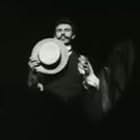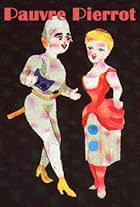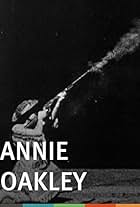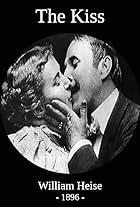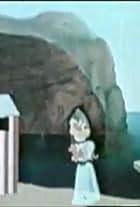IMDb RATING
6.7/10
2.6K
YOUR RATING
The earliest extant sound film, but the phonograph soundtrack has been lost. It depicts William K.L. Dickson standing in the background next to a huge sound pickup horn connected to a Thomas... Read allThe earliest extant sound film, but the phonograph soundtrack has been lost. It depicts William K.L. Dickson standing in the background next to a huge sound pickup horn connected to a Thomas Edison phonograph recorder.The earliest extant sound film, but the phonograph soundtrack has been lost. It depicts William K.L. Dickson standing in the background next to a huge sound pickup horn connected to a Thomas Edison phonograph recorder.
- Director
- Star
- Awards
- 1 win
Photos
William K.L. Dickson
- Violinist
- (uncredited)
Storyline
Did you know
- TriviaThe synchronized sound version was restored in 2000 by Walter Murch, Rick Schmidlin, Industrial Light and Magic and Skywalker Sound, which is a division of Lucas Digital, Ltd., LLC (a George Lucas company) in collaboration with the Library of Congress and the Edison National Historic Site.
- Quotes
Man: Are the rest of you ready? Go ahead!
- ConnectionsFeatured in The Miracle of Sound (1940)
- SoundtracksThe Chimes of Normandy
(1877) (uncredited)
(Originally called "Les cloches de Corneville (The Bells of Corneville)"
Written by Robert Planquette
Small section played on violin by William K.L. Dickson
Featured review
The very first talking picture has returned from oblivion, and now you can hear it and see it! In autumn of 1894, at the Edison lab complex in West Orange, New Jersey, Thomas Edison's associate William Dickson tried to combine two existing technologies (the phonograph and the kinetoscope) to record sound and image together. In the event, Dickson was unable to synchronise the playback of sound and image, so this experimental film was never released to paying audiences ... and consequently (unlike many silent films which Dickson made for Edison at this time) it has no official title. The silent image (recorded at 40 fps) has been in the Library of Congress for years, known to film historians as a mute curiosity. It was also known that the 'soundtrack' had been recorded on one of the crude wax cylinders languishing at the Edison National Historic Site ... although nobody knew which one.
But now that's changed. Recently, curators located the wax cylinder, which had broken into several pieces. These were reassembled: a playback was obtained, and the sound was digitised. Hollywood's veteran soundtrack editor Walter Murch cleaned up the background noise and tweaked the digitisation to make it synch with the film image, which Murch had digitally compressed to 30 fps. Sound and image are synchronised at last!
The film begins with an offscreen man's voice calling: 'The rest of you fellows ready? Go ahead!' (The unseen speaker remains unidentified, but was probably Dickson's assistant Fred Ott.) On screen, Dickson plays a violin into an immense funnel mounted on a tripod (one of Edison's sound-recording devices) while alongside him, in full view of the camera, two male lab assistants embrace each other for some quick ballroom dancing to the tempo of Dickson's music.
The film lasts barely 17 seconds: just long enough for us to marvel at this crude technology before being provoked to laughter at the sight of two men waltzing in each other's arms. Speaking of which, here's a WARNING: a well-known but extremely inaccurate reference book ('The Celluloid Closet', by the late Vito Russo) includes a frame enlargement from this movie and identifies it as 'The Gay Brothers'. That's incorrect. 'The Gay Brothers' is an entirely different movie, made by Dickson at the Edison lab during this same period. 'The Gay Brothers' never had a soundtrack: it's a brief fiction film about two brothers who are NOT 'gay' in the sense Russo meant it. The deceased Mr Russo, for his own reasons, wanted us to perceive Dickson's experimental sound film (arguably the first movie musical!) as an artefact of 19th-century homoeroticism. (Hmm, what is it about gay men and musicals?) Sorry, but there's just no such content here.
This vitally important film deserves a rating of 10 out of 10. I've often maintained that no 'lost' movie should ever be considered irretrievable unless it was deliberately destroyed: I'm delighted to report that this film is finally available to audiences as its producer intended it, more than a century after it was filmed!
But now that's changed. Recently, curators located the wax cylinder, which had broken into several pieces. These were reassembled: a playback was obtained, and the sound was digitised. Hollywood's veteran soundtrack editor Walter Murch cleaned up the background noise and tweaked the digitisation to make it synch with the film image, which Murch had digitally compressed to 30 fps. Sound and image are synchronised at last!
The film begins with an offscreen man's voice calling: 'The rest of you fellows ready? Go ahead!' (The unseen speaker remains unidentified, but was probably Dickson's assistant Fred Ott.) On screen, Dickson plays a violin into an immense funnel mounted on a tripod (one of Edison's sound-recording devices) while alongside him, in full view of the camera, two male lab assistants embrace each other for some quick ballroom dancing to the tempo of Dickson's music.
The film lasts barely 17 seconds: just long enough for us to marvel at this crude technology before being provoked to laughter at the sight of two men waltzing in each other's arms. Speaking of which, here's a WARNING: a well-known but extremely inaccurate reference book ('The Celluloid Closet', by the late Vito Russo) includes a frame enlargement from this movie and identifies it as 'The Gay Brothers'. That's incorrect. 'The Gay Brothers' is an entirely different movie, made by Dickson at the Edison lab during this same period. 'The Gay Brothers' never had a soundtrack: it's a brief fiction film about two brothers who are NOT 'gay' in the sense Russo meant it. The deceased Mr Russo, for his own reasons, wanted us to perceive Dickson's experimental sound film (arguably the first movie musical!) as an artefact of 19th-century homoeroticism. (Hmm, what is it about gay men and musicals?) Sorry, but there's just no such content here.
This vitally important film deserves a rating of 10 out of 10. I've often maintained that no 'lost' movie should ever be considered irretrievable unless it was deliberately destroyed: I'm delighted to report that this film is finally available to audiences as its producer intended it, more than a century after it was filmed!
- F Gwynplaine MacIntyre
- Mar 26, 2003
- Permalink
Details
- Runtime1 minute
- Color
- Aspect ratio
- 1.33 : 1
Contribute to this page
Suggest an edit or add missing content



